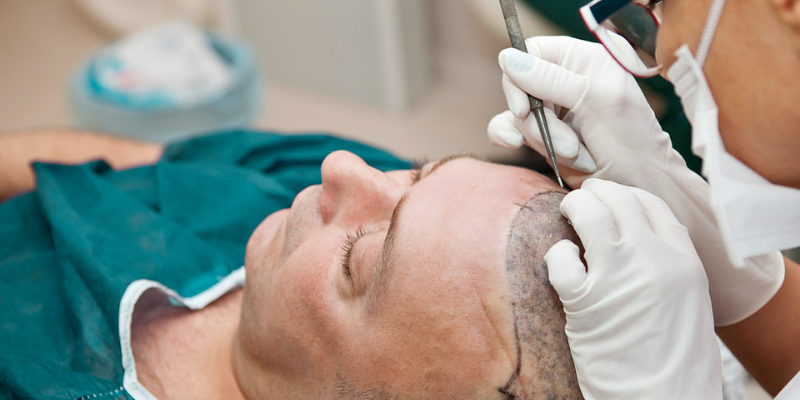One of the most important things in the minds of hair transplantation preferences is how effective hair is transplant. Hair transplantation is the process of transplanting hair follicles taken from the nape of people with hair loss problems and baldness to the problematic area.
How Effective Is Hair Transplant?
If you’re in need of hair transplantation, you can count on it to function. Hair transplantation is not a guarantee or a claim. For one thing, it’s been proved. So, let’s just assume that this is a medical situation, shall we? In this case, the rationale is very apparent. We remove the roots from a healthy region and put them here, after evaluating the location where the hair fell. The hair grows back after that. As a result, there is no reason why it shouldn’t function. Those who have questions regarding hair transplantation are advised to put them aside.
Hair Transplant Calculation: How Effective Is Hair Transplant?
Will a hair transplant be successful? When it comes to women and men, hair transplantation is always a success. As a whole, it’s a successful procedure. Hair transplantation is without a doubt effective. A precise computation is required for this. Each person seeking a hair transplant will require a different proportion and volume of hair. For example, the hair’s structure, shedding condition, and donor area management are all factors to consider. After all of this, the computation is complete and the number of roots to be extracted is known.
How Effective Is Hair Transplant: Results
In hair transplantation, the form and cause of hair loss are the determining factors rather than age. If the skin has become visible when viewed with the naked eye, the most effective and most beautiful method to be applied in this case is transplantation. The first session is done, and if needed in the future, hair transplantation can be repeated in the second and third transplantation as long as the donor area is sufficient. In order to protect the transplanted hair, we start the mesotherapy application 2-3 months after the operation, protecting the existing and transplanted hair and making it thicker. This will stop the spilling.
Alternatively, hair mesotherapy involves injecting vitamins, minerals, and growth factors into the scalp using a needle in order to nourish your hair and keep it healthy. As a result of this, and most significantly, it is an effective way to halt shedding. In addition, the transplant recipient must be at least 18 years old.
A young age for sowing is not advised. Blood pressure, heart rate, sugar, hypertension and hepatitis are all monitored at the same time.
Do Hair Transplants Work?
When it comes to hair transplants, they have a higher success rate than the over-the-counter treatments available. But there are a few things to keep in mind:
It’s anticipated that between 10 and 80 percent of the transplanted hair will regrow in three to four months time. The transplanted hair will thin over time, just as normal hair. The effectiveness of hair transplants in people with dormant hair follicles (sacs that typically store hair beneath the skin, but no longer generate hair) may be reduced, but a 2016 study shows that plasma treatment can enable up to 75 percent or more of the transplanted hairs entirely come back. Sadly, hair transplants aren’t a remedy for everybody.
Most of the time, they’re utilized to regrow hair if you’ve lost it due to baldness, thinning, or damage. They’re less helpful for those with extensive thinning and balding, hair loss due to chemotherapy or other medicines, or thick scalp scars.
Recently, hair transplanting surgery has advanced significantly.
Hair Transplant Success Rate
Patients often wonder: “How successful are hair transplants?” According to estimates, 90-95 percent of transplanted hair grafts survive. Thus, hair transplantation will be effective in most situations. However, complete results might take up to 18 months to appear.
Ninety-five percent of hair transplant grafts survive. In essence, this implies the transplanted hair should be in good condition. The success percentages of hair transplants are based on patient satisfaction levels. It proves that FUE hair transplant patients who used a mix of donor hair from their head, torso, or beard were more satisfied with the results.
The ultimate effects of a hair transplant might take a long time to emerge. The ‘shedding phase’, in which up to 90% of the transplanted hair comes out, surgeon expects to occur after the operation. However, this does not imply that the surgery was a failure. A normal and temporary reaction to the operation, hair will gradually begin to come back and recover over the next few months. The complete effects of a hair transplant are usually visible after 12 months, although in rare circumstances it may take up to 18 months.
Factors Which Can Affect Hair Transplant Success Rates
Some key factors can have an impact on the overall success rate of a hair transplant procedure. Especially since the specifics of a hair transplant operation are typically unique to the individual having treatment, it’s vital to keep these in mind.
Hair transplant surgery is able to perform in a variety of ways. It accepts that FUE is the most popular method because of its minimally invasive nature and the fact that there are no visible scars after the procedure complete generally. For the same reason, FUE success rates are typically quite high in the general population.
Thanks to novel innovations such as the use of sapphire and diamond blades for transplanting surgery, FUE is becoming increasingly successful.
DHI and FUT do not have poor success rates, though. As an alternative to FUE, DHI may be more effective. Hair follicles can transplant directly into the recipient region without the requirement for the channel-creation procedure since DHI does not require it. Thus, the danger of their loss or destruction before transplantation diminishes greatly. If your hair is of a certain kind, form, or feature, it may also affect the outcome of your hair restoration treatment. Because afro hair transplants require more time and care in order to attain the same outcomes. So they tend to take a bit longer.
How Effective is a Hair Transplant in Older Adults?
Hair loss is a common problem for older adults, but it can be particularly distressing when it occurs in a larger and more noticeable manner. Hair transplants are one potential solution, but how effective is hair transplant is a hair transplant in older adults? The answer to this question largely depends on the individual. Factors such as the extent of hair loss, the quality of the donor hair, and the surgeon’s skill can all play a role in determining the effectiveness of a hair transplant. In general, however, hair transplants can be an effective solution for treating hair loss in older adults. Hair transplants involve harvesting donor hair follicles from areas of the scalp that are still healthy and then transplanting them into balding areas. The transplanted hairs grow just like normal hair, providing a natural-looking result.

One major benefit of hair transplants for older adults is that they can provide a permanent solution to their hair loss. Unlike other treatments such as minoxidil or finasteride, which must be taken continuously to maintain results, a successful hair transplant will last for many years. This means that once the procedure is completed, you won’t have to worry about further maintenance or additional treatments.





